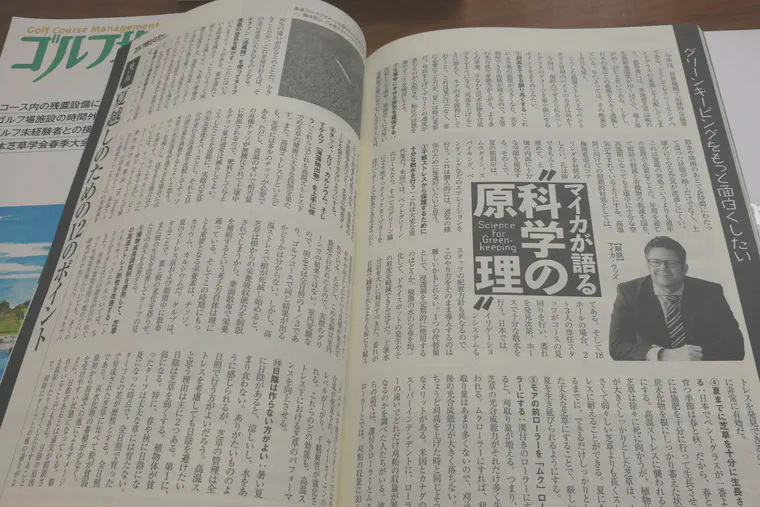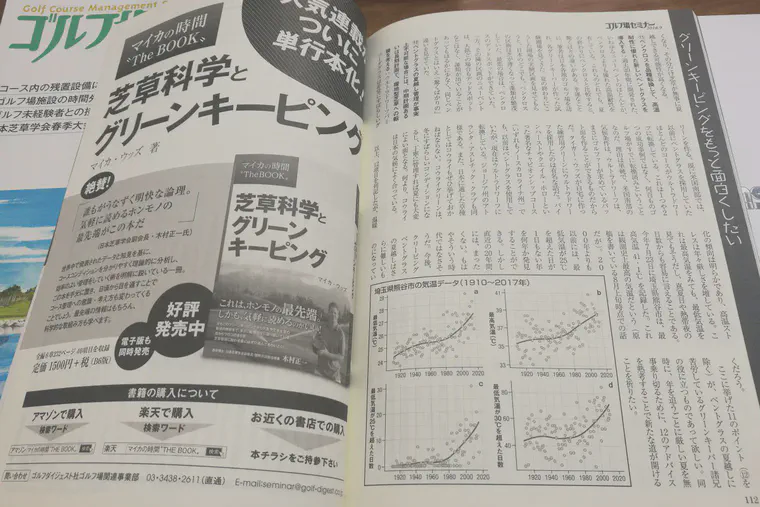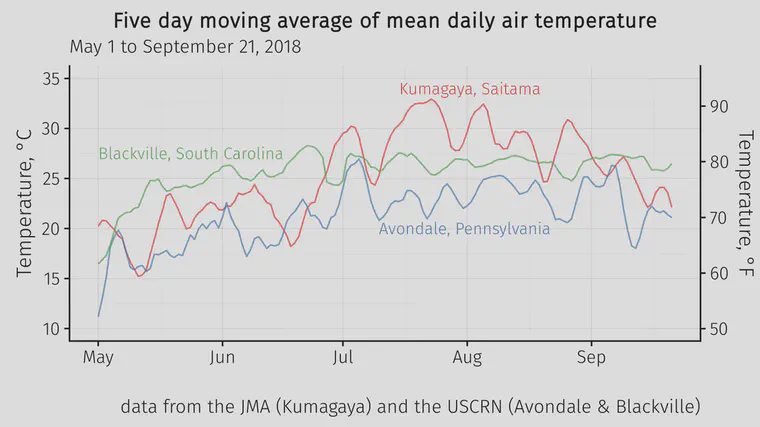Catching up on my reading, heat stress edition
I’ve been writing a monthly column for Golf Course Seminar (ゴルフ場セミナー) since May of 2008. The articles are usually 2 pages.

I wrote a couple 4 page articles when マイカの時間 The BOOK was published last year. But the first time I’ve written a 3 page article was for the September 2018 issue.

The topic was a 12 point checklist for creeping bentgrass heat stress. Most golf courses in Japan have creeping bentgrass greens, and the summer of 2018 had record-setting high temperatures. I wrote about these things:
- Raise the mowing height.
- Make sure there is plenty of air in the soil.
- Supply enough water so the grass does not suffer from drought stress.
- Grow a large plant before summer.
- Use solid front rollers on mowers.
- Use fans to move air across the turf canopy.
- Use preventative fungicides.
- Make sure the grass is supplied with enough nutrients, especially N, K, and Ca. Add kelp too.
- Use plant growth regulators.
- Remove or reduce sources of shade.
- Use new bentgrasses with better heat tolerance than Penncross.
- If the heat stress is a problem you can’t solve, look at changing to warm-season turf.
What level of heat stress was I writing about? I usually look at something like sustained durations with an average air temperature above 20 °C to start. And for really intense heat stress, I’ll look at average air temperatures above 25 °C. For irrigated turf, one can expect the soil temperature to be about the same as the average air temperature. And cool season grasses don’t grow well when the soil temperatures are consistently above 20 °C, let alone 25 °C.
I looked up some data for this summer from three locations: Kumagaya in Saitama prefecture, near Tokyo, where the new record high temperature for Japan of 41.1 °C (106 °F) was set on July 23; Avondale, Pennsylvania; and Blackville, South Carolina.

That’s the type of heat stress I was writing about.
In Avondale, the average temperature has been above 20 °C since mid-June, with just a short break a week or so ago. In Blackville, it’s been above 20 °C since early May, and above 25 °C almost nonstop since late May. Kumagaya has been above 20 °C since mid-May, and in July and August had lots of time with the average temperature above 30 °C.
I was writing about bentgrass greens in the article. In locations near Avondale, I expect most putting greens will be bentgrass or Poa annua. When the heat stress lasts as long as it does at locations near Blackville, there will be a lot more courses with warm-season turf on putting greens. And in locations near Kumagaya, it is still largely creeping bentgrass.